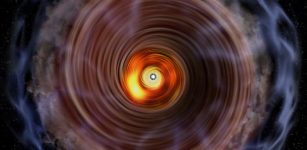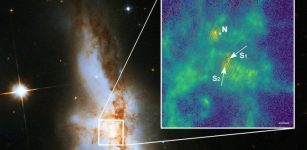‘Zone Of Avoidance’ – Hidden Galaxies Behind The Milky Way – Discovered
MessageToEagle.com – Hundreds of hidden nearby galaxies have been studied for the first time, shedding light on a mysterious gravitational anomaly dubbed the Great Attractor.
Despite being just 250 million light years from Earth–very close in astronomical terms–the new galaxies had been hidden from view until now by our own galaxy, the Milky Way.
Using CSIRO’s Parkes radio telescope equipped with an innovative receiver, an international team of scientists were able to see through the stars and dust of the Milky Way, into a previously unexplored region of space.

“The Milky Way is very beautiful of course and it’s very interesting to study our own galaxy but it completely blocks out the view of the more distant galaxies behind it,” said Lister Staveley-Smith, from The University of Western Australia and lead author of the new study, in a news release.
The discovery may help to explain the Great Attractor region, which appears to be drawing the Milky Way and hundreds of thousands of other galaxies towards it with a gravitational force equivalent to a million billion Suns.
Until now, astronomers found 883 galaxies, a third of which had never been seen before and for many years, they have tried to solve a mystery of gravitational anomaly named the Great Attractor.
“We don’t actually understand what’s causing this gravitational acceleration on the Milky Way or where it’s coming from,” Staveley-Smith said.
“We know that in this region there are a few very large collections of galaxies we call clusters or superclusters, and our whole Milky Way is moving towards them at more than two million kilometres per hour.”
The study involved researchers from Australia, South Africa, the US and the Netherlands.
Research is published today in the Astronomical Journal.
MessageToEagle.com
Expand for references









